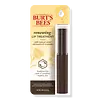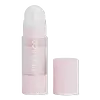What's inside
What's inside
 Key Ingredients
Key Ingredients

 Benefits
Benefits

 Concerns
Concerns

 Ingredients Side-by-side
Ingredients Side-by-side

Helianthus Annuus Seed Oil
EmollientCocos Nucifera Oil
MaskingBeeswax
Emulsion StabilisingCaprylic/Capric Triglyceride
MaskingRicinus Communis Seed Oil
MaskingOlea Europaea Fruit Oil
MaskingHelianthus Annuus Seed Wax
Skin ConditioningOctyldodecanol
EmollientPersea Gratissima Oil
Skin ConditioningVegetable Oil
Skin ConditioningButyrospermum Parkii Butter
Skin ConditioningSclerocarya Birrea Seed Oil
HumectantBixa Orellana Seed Extract
MaskingTheobroma Cacao Seed Butter
EmollientGarcinia Indica Seed Butter
Skin ConditioningCeramide NP
Skin ConditioningGlycine Soja Oil
EmollientLanolin
EmollientAroma
Lecithin
EmollientSilybin
Skin ConditioningTocopherol
AntioxidantRebaudioside A
Skin ConditioningCitric Acid
BufferingLimonene
PerfumingHelianthus Annuus Seed Oil, Cocos Nucifera Oil, Beeswax, Caprylic/Capric Triglyceride, Ricinus Communis Seed Oil, Olea Europaea Fruit Oil, Helianthus Annuus Seed Wax, Octyldodecanol, Persea Gratissima Oil, Vegetable Oil, Butyrospermum Parkii Butter, Sclerocarya Birrea Seed Oil, Bixa Orellana Seed Extract, Theobroma Cacao Seed Butter, Garcinia Indica Seed Butter, Ceramide NP, Glycine Soja Oil, Lanolin, Aroma, Lecithin, Silybin, Tocopherol, Rebaudioside A, Citric Acid, Limonene
Alternatives
Ingredients Explained
These ingredients are found in both products.
Ingredients higher up in an ingredient list are typically present in a larger amount.
Citric Acid is an alpha hydroxy acid (AHA) naturally found in citrus fruits like oranges, lemons, and limes.
Like other AHAs, citric acid can exfoliate skin by breaking down the bonds that hold dead skin cells together. This helps reveal smoother and brighter skin underneath.
However, this exfoliating effect only happens at high concentrations (20%) which can be hard to find in cosmetic products.
Due to this, citric acid is usually included in small amounts as a pH adjuster. This helps keep products slightly more acidic and compatible with skin's natural pH.
In skincare formulas, citric acid can:
While it can provide some skin benefits, research shows lactic acid and glycolic acid are generally more effective and less irritating exfoliants.
Most citric acid used in skincare today is made by fermenting sugars (usually from molasses). This synthetic version is identical to the natural citrus form but easier to stabilize and use in formulations.
Read more about some other popular AHA's here:
Learn more about Citric AcidHelianthus Annuus Seed Wax is created from the common sunflower.
Sunflower seed wax is made up of long chain non-glyceride esters, a small amount of fatty alcohols, and fatty acids.
This ingredient is often used to enhance the texture of products. The fatty acid properties also help hydrate the skin.
Learn more about Helianthus Annuus Seed WaxLimonene is a fragrance that adds scent and taste to a formulation.
It's found in the peel oil of citrus fruits and other plants such as lavender and eucalyptus. The scent of limonene is generally described as "sweet citrus".
Limonene acts as an antioxidant, meaning it helps neutralize free radicals.
When exposed to air, oxidized limonene may sensitize the skin. Because of this, limonene is often avoided by people with sensitive skin.
The term 'fragrance' is not regulated in many countries. In many cases, it is up to the brand to define this term. For instance, many brands choose to label themselves as "fragrance-free" because they are not using synthetic fragrances. However, their products may still contain ingredients such as essential oils that are considered a fragrance.
Learn more about LimoneneOctyldodecanol is a fatty alcohol. It is primarily used to enhance the texture of products.
As an emulsifier, Octyldodecanol helps prevent the oils and waters from separating. It also prevents ingredients from creating foam when shaken.
Octyldodecanol is created by reducing fatty acid to an alcohol.
Due to its high molecular weight, it does not get absorbed into the skin.
Learn more about OctyldodecanolTocopherol (also known as Vitamin E) is a common antioxidant used to help protect the skin from free-radicals and strengthen the skin barrier. It's also fat soluble - this means our skin is great at absorbing it.
Vitamin E also helps keep your natural skin lipids healthy. Your lipid skin barrier naturally consists of lipids, ceramides, and fatty acids. Vitamin E offers extra protection for your skin’s lipid barrier, keeping your skin healthy and nourished.
Another benefit is a bit of UV protection. Vitamin E helps reduce the damage caused by UVB rays. (It should not replace your sunscreen). Combining it with Vitamin C can decrease sunburned cells and hyperpigmentation after UV exposure.
You might have noticed Vitamin E + C often paired together. This is because it is great at stabilizing Vitamin C. Using the two together helps increase the effectiveness of both ingredients.
There are often claims that Vitamin E can reduce/prevent scarring, but these claims haven't been confirmed by scientific research.
Learn more about Tocopherol